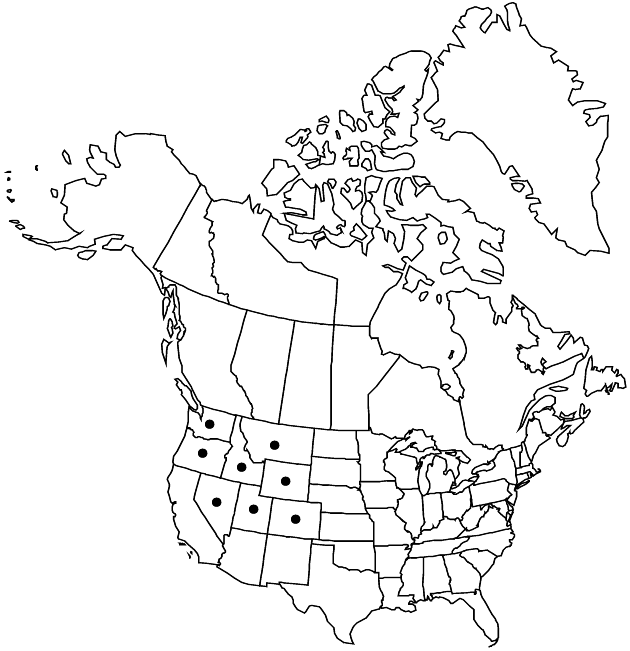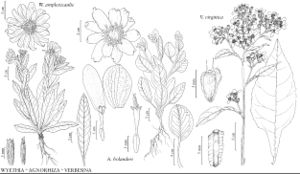Wyethia amplexicaulis
Trans. Amer. Philos. Soc., n. s. 7: 352. 1840.
Plants 25–50 (–100) cm. Basal leaves: blades (green, shining) lance-elliptic or oblong-lanceolate to lanceolate, 15–30 (–40+) cm, margins usually entire, sometimes denticulate or dentate, not ciliate, faces glabrous (glanddotted, vernicose); cauline leaves similar, smaller distally (distalmost sessile, usually ± clasping). Heads usually 2–8 in ± corymbiform to racemiform arrays, sometimes borne singly. Involucres hemispheric to turbinate, 15–30 mm diam. Phyllaries 18–36+, subequal or unequal, herbaceous (at least outer), margins not ciliate, faces glabrous; outer 18–32 mm (surpassing inner). Ray-florets 8–21 (–25); laminae 25–60 mm. Cypselae 8–9 mm, glabrous. 2n = 38.
Phenology: Flowering May–Jul.
Habitat: Wet to dry, open sites, meadows, sagebrush scrub, yellow-pine forests
Elevation: 400–3000 m
Distribution

Colo., Idaho, Mont., Nev., Oreg., Utah, Wash., Wyo.
Discussion
Wyethia amplexicaulis introgressively hybridizes with W. arizonica (producing plants called W. ×magna A. Nelson ex W. A. Weber) across a broad area of central and southern Colorado. Habit of the hybrid is typical of W. amplexicaulis; the indument resembles that of W. arizonica in varying degrees. Occasionally, W. amplexicaulis hybridizes with but does not introgress with W. helianthoides.
Selected References
None.
Lower Taxa
"broader" is not a number.
